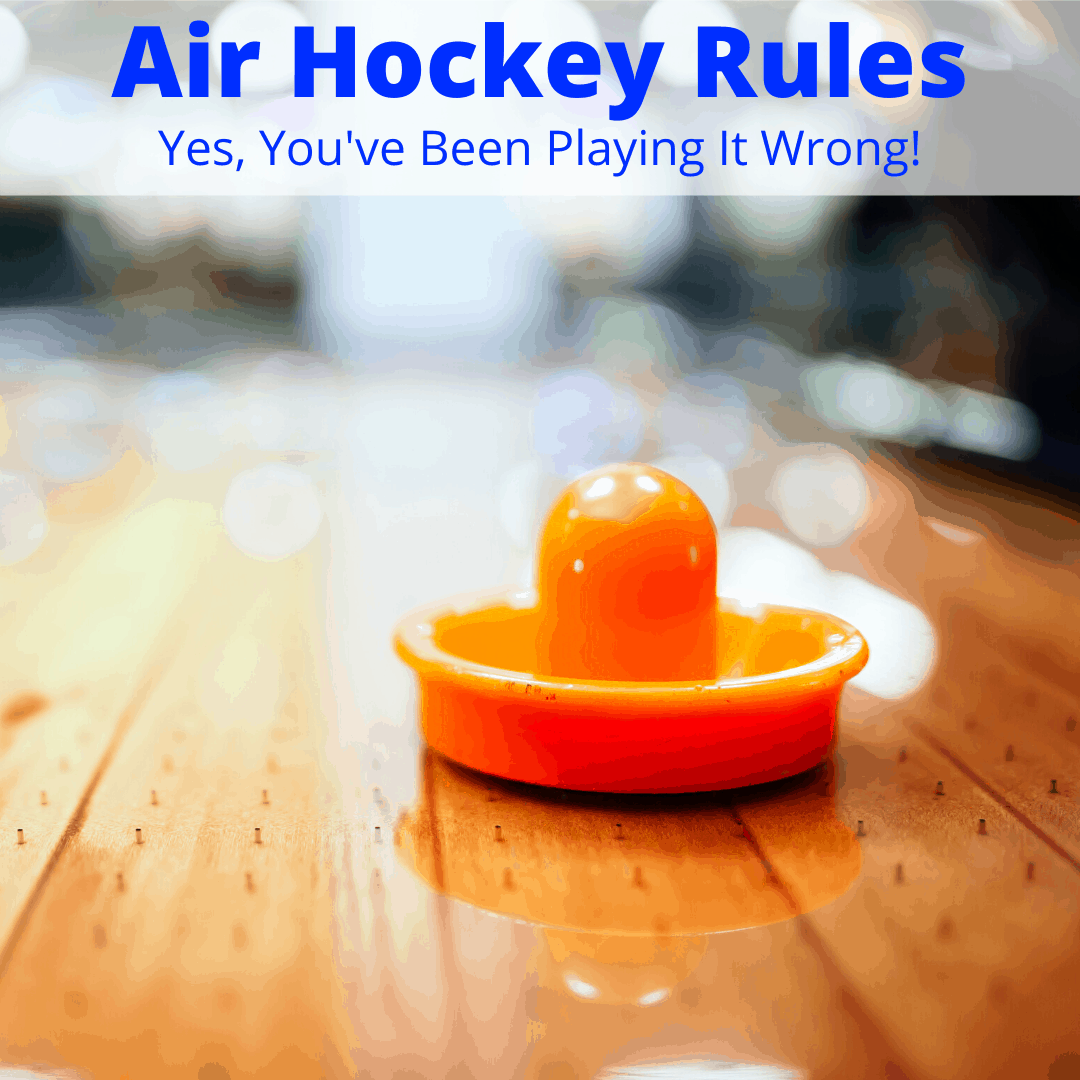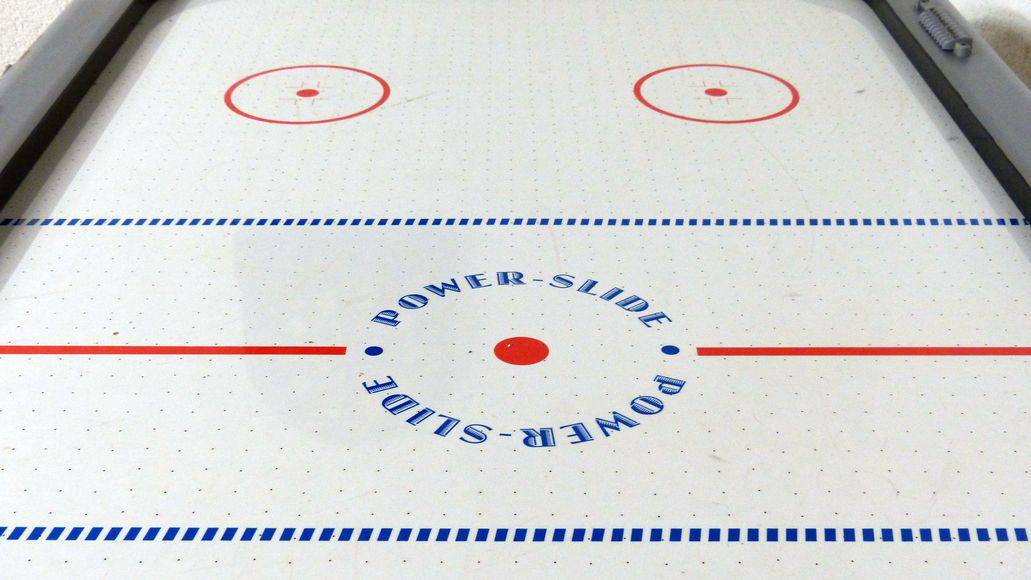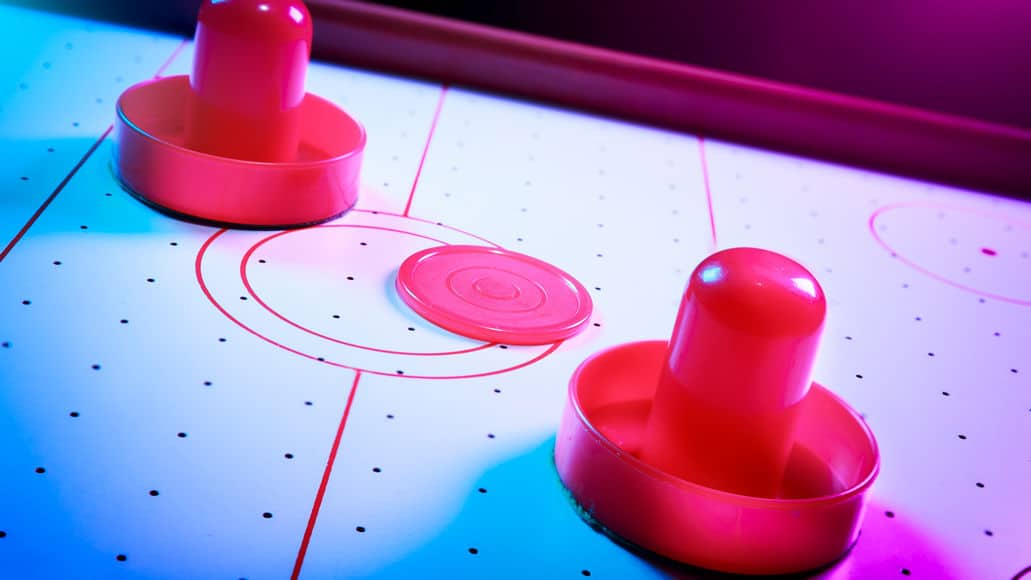 Most people have played air hockey at some point in their lives. It’s a staple in arcades all over the world and a favorite for home game rooms.
Most people have played air hockey at some point in their lives. It’s a staple in arcades all over the world and a favorite for home game rooms.
However, very few people actually know the official rules to the game. There is more to it than simply smashing a little disk as hard as humanly possible across a table that blows air.
Air hockey actually has its own governing bodies and World Championship events. It’s a serious sport.
The game of air hockey has been around since the 1970s.
Invented by a trio of Brunswick Billiards engineers, the game was an almost instant success and only took a few years to have its own official World Championships. The biggest air hockey federation is the United States Air Hockey Association (USAA) and it ran its first annual World championship in 1978.
The USAA is largely responsible for all of the main air hockey rules and regulations. Most of which will be covered in this article. So, carry on reading and learn how to play air hockey like the pros.
Air Hockey Equipment Regulations
Before worrying about how to play legally and win air hockey matches, which will all be covered later, you need to have the correct equipment to play with.
Due to the relatively simple nature of the game, there are just three different pieces of equipment that you need to play the game of air hockey. The table, puck and mallet (sometimes referred to as a striker).
The USAA has an official set of rules and regulations for each piece of equipment to ensure play is fair and standardized across the board.
Tables
The table consists of 5 main elements: the playing surface, side rails, end rails, goals and the center line.
An official air hockey table should be built with a number of small holes in the playing surface to allow air to flow on to the table. The air provides a minimal friction surface and makes play very fast.

Some cheaper tables may omit the holes and the air blower machine. Instead, these tables will employ the use of a very slick playing surface in an effort to emulate the play speed of air tables.
However, these kinds of tables are not actually air hockey and very rarely produce the same kind of fast-paced gameplay. In addition, airless tables are not sanctioned for competitive play.
Competitive play must take place on 8-foot tables and on a USAA sanctioned table.
For beginners and casual players, a home air hockey table is more than enough. They have all the fundamental features that will allow you to have a fun and competitive game.
If you’re thinking of getting one, they are surprisingly affordable. We compared the best air hockey tables on the market and several of them cost far less than you would expect.
Pucks
An air hockey puck is made of very tough Lexan polycarbonate resin. Pucks are round for competition and on most commercial tables, but there are triangular, hexagonal, square and octagon-shaped pucks available.
The size and weight of the puck may vary based on the size of the table it is being used on. Smaller tables will use smaller and lighter pucks. A 2 ½ inch diameter puck is best used on tables that are 6 feet and under in length.
For bigger tables, it is recommended that a 3 ¼ inch puck should be used. However, some 7-foot tables may still use the smaller puck. Tables with stronger air blowers need to use larger pucks to prevent it from flying off of the table during play.
For competitive play on full-size, 8-foot tables, the puck should be 3 and ¼ inches in diameter. There are only 3 pucks that are sanctioned for use by the USAA.
The sanctioned pucks are the Lexan-yellow, Lexan-red and Dynamo-green. Although, the Lexan-yellow should always be used in a USAA sanctioned match unless both players agree to use one of the other pucks.
The Mallet
Mallets, sometimes referred to as strikers, goalies, paddles or pushers, are the tools used to control the puck and strike it into your opponent’s goal.

An official mallet should be made of the same material as the puck, Lexan polycarbonate.
Here are the official USAA rules regarding mallets:
- Weight must be 6 oz. or less.
- Diameter must be less than 4-1/16″
- It may come in any color, except that the outside rim must be of a different color than the table’s game surface
- The mallet must consist of the same material and be uniform and symmetrical throughout its circumference
- No mallet may be altered by sloping the playing surface in order to create an angled striking or defending surface
Your mallet can be changed at any point during gameplay.
Starting The Game
The winner of an air hockey match is the first person to win 4 games, it is best out of 7 games. A game is won when you score 7 points or “goals”.
By now, you should know the rules on equipment and everything you are using will be legal for gameplay. So, it’s time to discuss some actual air hockey gameplay rules by beginning with the “face off”.
Every match of air hockey begins with a face-off.
Before the face-off itself, a coin toss is made to decide which end the players will start at. The winner of the coin toss chooses their preferred starting end then it’s on to the face-off.
For the face-off round, the puck begins on the center-line. Players are allowed to move their mallets anywhere on the table but must be at least an inch away from the puck.
The referee will wait for a few seconds and then release the puck. Players are now allowed to go for the puck and try to score in the opponent’s goal.
After the face-off, each game begins with one player in possession of the puck and serving from their end of the table. The face-off winner serves for games 3, 5 and 7 with the loser serving for games 2,4 and 6.
Gameplay Rules

After the face-off has been won and lost, the match can continue on with regular game play.
Air hockey game play has a standard set of rules that are issued by the USAA. Here is an easy-to-follow version of the official air hockey rules:
- You are permitted to stand anywhere around the air hockey table on your own side of the center-line. You may not pass the center-line at any point.
- Only one puck should be on the table at all times during the match.
- The first player to score seven goals in a game is the winner of that particular game. A match is played best out of 7 games. So, the winner is the first player to reach 4 game wins.
- You must not hit the puck with the underside of your mallet when the puck is on the table. Any other part of the mallet is fair game. However, you can bring down an airborne puck with any part of your mallet.
- If you touch the puck with any body part during play, a foul is conceded. This is called “palming”.
- To score, the puck must break the horizontal plane of the goal. A puck that tilts towards the goal mouth has broken the horizontal plane and counts as a score.
- If the puck goes into the goal but does not tilt, the horizontal plane hasn’t been broken. The defending player can either pick the puck out manually and hand it to their opponent or they can try and work the puck out using legal methods with their mallet.
- Holding the mallet on top of the puck is a violation and results in a foul. This is called “topping”.
- As soon as the puck enters your side of the table, you have 7 seconds to hit it back over the center line. Taking longer results in a foul.
- When the puck is in contact with any part of the center-line, either player may strike the puck.
- The player who is scored upon always receives possession of the puck for the next serve.
- You may take one timeout per game. A timeout lasts a maximum of 10 seconds and you must make a clear indication of a time-out so that your opponent understands your intention to stop play. You may only take a timeout if you have possession or the when the puck is not in play.
- When you concede a goal, you have 10 seconds to take the puck out of your goal and return it to play. The 10 seconds start as soon as the puck has fallen completely through the goal and is available for the player to place into play. During a timeout, this rule is not in effect.
- You may place the puck in front of your mallet with your hand after conceding a goal. This is the only time you may use your hands in play.
- After each game, players swap sides.
Rules Of Air Hockey: Summary
Most of the above rules, regulation and guidelines pertain to official competitive play, as sanctioned by the USAA. While you should adhere to these rules as closely as you can during all types of play, remember to enjoy yourself during the game.
Outside of competitive play, the rules can be relaxed slightly. In most cases, they will need to be relaxed a bit due to the absence of a referee.
As long as all players agree to the rules beforehand, you are sure to have a great time playing air hockey.
Leave a Reply